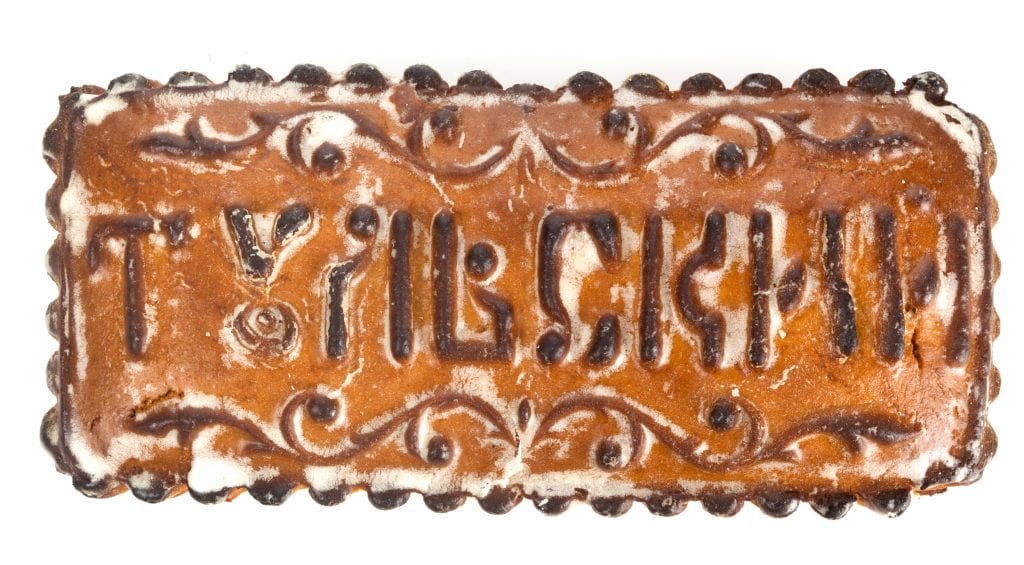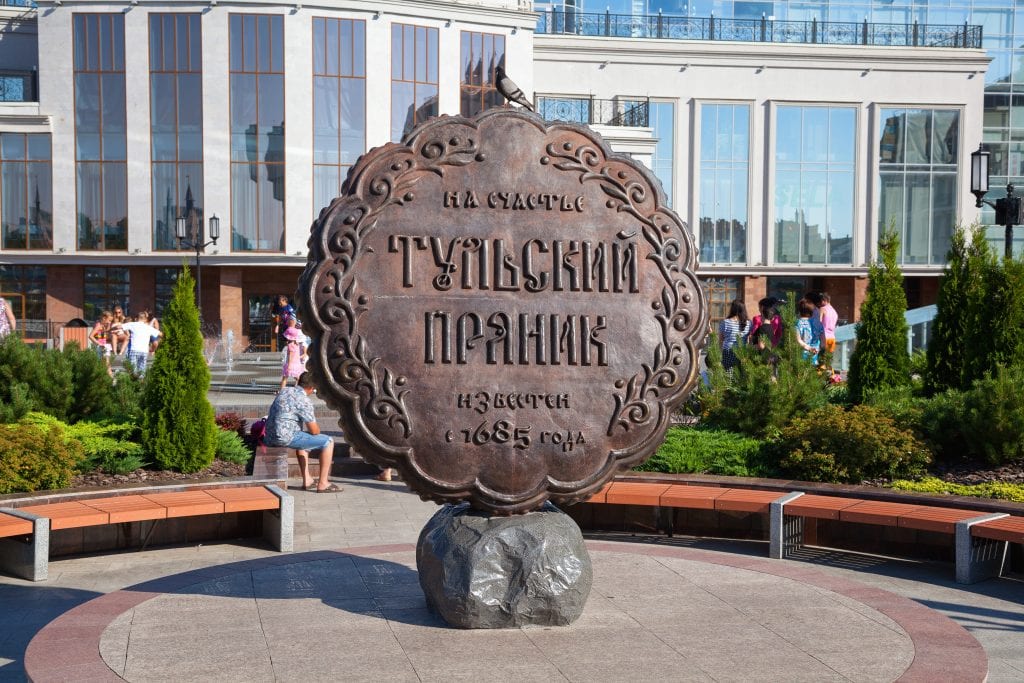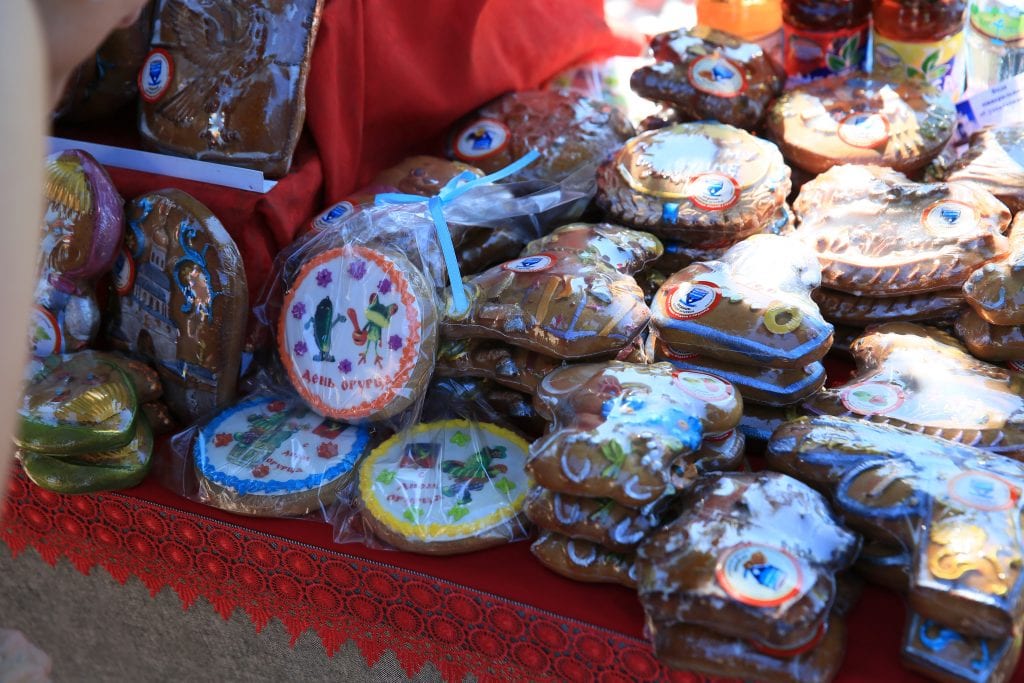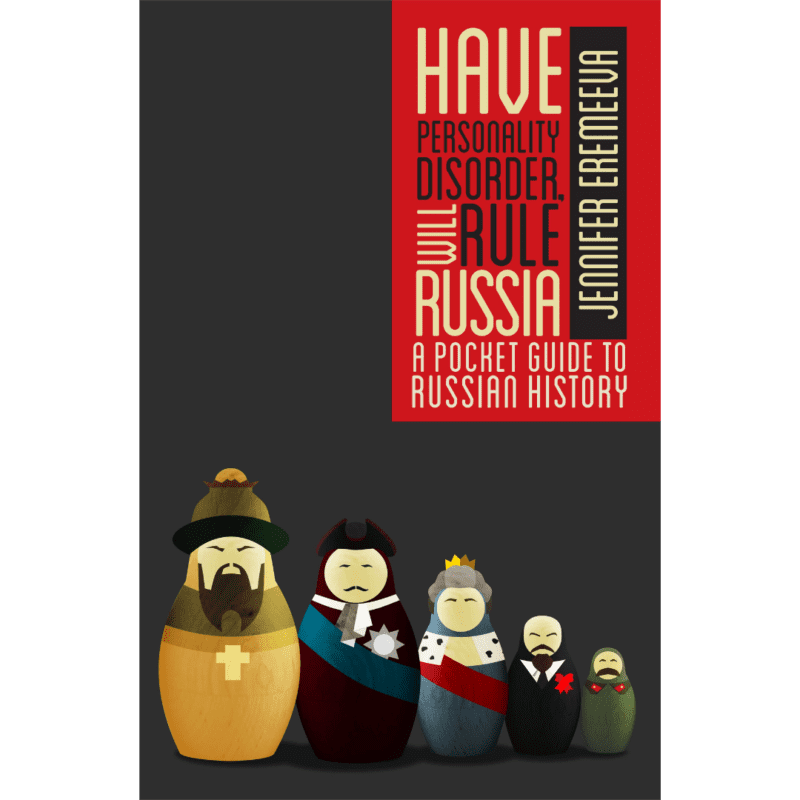If there is an ingredient more versatile and delicious than ginger, it has yet to come across my chopping board.
I love anything with ginger: ginger ale, ginger and carrot soup, spicy Asian noodles with ginger and garlic, and, of course
I love anything with ginger: ginger ale, ginger and carrot soup, spicy Asian noodles with ginger and garlic, and, of course pryaniki: the Russian gingerbread figurines synonymous with day trips outside Moscow to smaller, quieter towns, ringed with medieval walls and graced with golden onion domes that still tower above the other two-storied buildings.
Ginger All the Way!
I love anything with ginger: ginger ale, ginger and carrot soup, spicy Asian noodles with ginger and garlic, and, of course pryaniki: the Russian gingerbread figurines synonymous with day trips outside Moscow to smaller, quieter towns, ringed with medieval walls and graced with golden onion domes that still tower above the other two-storied buildings.
In the lean years of early perestroika, I never saw any fresh ginger in Russia, and I did a little victory jig when I finally did come across it in 1999: a shriveled, less-than-fresh knob of ginger root: bound and gagged by a flimsy waxed paper tray and a relentless swath of plastic wrap – but yearning, you could just see, to be released and grated – releasing its restoring tangy odor of spicy cleanliness – and added to chicken, lentils, or noodles to make them sing!
Gingerbread in Russia
Ginger was well known in ancient times for both its medicinal and culinary properties and re-introduced to Europe in the 12th century by Crusaders returning from the East. The lack of reliable trade routes from the West to the East made ginger very expensive, and only wealthy monastic communities or great manor houses could afford to use it every day. Ginger was teamed up with honey, the primary sweetener of the day, to make thick chewy cakes, often molded into the shape of little men and women, and decorated with stamps and icing to detail the attributes of particular saints and heroes for feast days and holidays. To the healing and preserving properties of ginger, medieval Europeans soon added that of a powerful charm against evil spirits, and this pervades the fairy stories of the day: Hansel and Gretel eat the gingerbread house of the wicked witch, and their Russian counterparts in the similar tale of “Baba Yaga” are given cookies – there are cookies everywhere, notes the narrator — by their good grandmother to sustain them on their journey to their evil step-grandmother, Baba Yaga.
Russian pryaniki are still made today in traditional centers: Vyazma, Arkhangelsk and particularly Tula, which is also the traditional center for making samovars: the bronze or copper charcoal-fueled hot water boilers that Russians use to make tea.
In Russian, the expression “take your own samovar to Tula” is the equivalent of “Coals to Newcastle.” Each town has its own distinctive shapes, decorative style, and secret recipe for the musky, chewy cookies, which team up beautifully with a glass of Russian tea on a chilly autumn afternoon…and you never know what evil spirits might be lurking around!
PryanikiTraditional Russian pryaniki use special molds and stamps, but don’t let the lack of them stop you from trying to make them yourself: traditional cookie cutters do just as well, as does the rim of a glass. Ingredients:3-cups all-purpose flour 1-teaspoon baking soda 1-teaspoon of dry ginger 1/2-teaspoon ground cinnamon 1/2-teaspoon ground cardamom 1/4-teaspoon ground nutmeg 1/8-teaspoon salt 2 large eggs 1 knob of fresh ginger: finely grated 1-cup granulated sugar 1-cup of honey 1 1/2 teaspoon vanilla extract 1/2-cup confectioners’ sugar 2 tablespoons of lemon juice 3 tablespoons of lemon zest Directions:1. Sift together the flour, baking soda, ginger, cinnamon, cardamom, nutmeg, and salt. 2. Beat the eggs and sugar in a large bowl with an electric mixer at high speed until pale and thick. 3. Gently heat the honey and ginger in a double boiler until warmed through. 4. Stir the honey and vanilla into the beaten egg mixture. Mix in the dry ingredients to form a stiff dough. 5. Wrap in plastic and refrigerate for 1 hour. 6. Make the icing: Combine confectioner sugar, lemon juice, and lemon zest together until smooth. Set aside. 7. Preheat the oven to 190°C. Place the tack in the middle of the oven. Butter or grease two cookie sheets. 8. Turn out the dough onto a lightly floured surface and roll out to 1-centimeter thickness. 9. Cut the cookies to roughly 5 centimeters in diameter, depending on the shape and cutters you use. 10. Place cookies on the prepared baking sheets at 5-centimeter intervals. Bake for 9 minutes; rotate the sheet, then bake for an additional 9 minutes (total 18 minutes or until the cookies are just golden). 11. Allow the cookies to cool for 2 minutes on the tray, and then transfer them to a cooling rack for at least 20 minutes. 12. Glaze cookies with icing. |
Priyanogo Appetita!
————————————
This column originally appeared in print in French on September 15, 2010 in Le Figaro and La Russie d’Aujourd’hui under the title “Petit pain porte-bonheur.” A link to the original version online can be found here.












All i know is this bread are delicious! Nothing wrong about them.
I’ve been wanting a pryanik recipe! Question- does solidified Russian honey work, or does that mess up the texture and I’d be better off with the liquidy (but less flavorful) American stuff?
Hi Joy!
Try the the Russian honey — as you are heating it anyway, the consistency will change but the flavor will remain. Let us know how they turn out!
yes, left the comment only after reading the ingredient list and realized as soon as I’d read the rest of the instructions I’d be fine even with solid honey! Anyway, thanks for the recipe. I’ll give it a try.
This is a great recipe, but my pryaniki didn’t puff up nicely like the ones in the picture. I don’t know if I didn’t beat the eggs long enough, or if my baking soda is weak, or what. The result was a crunchy, rather than chewy, cookie, much more like a ginger snap than a pryanik. That said, they’re definitely the best gingersnaps I’ve ever made. The honey and cardamom add amazing flavor that you don’t usually get in American cookies.